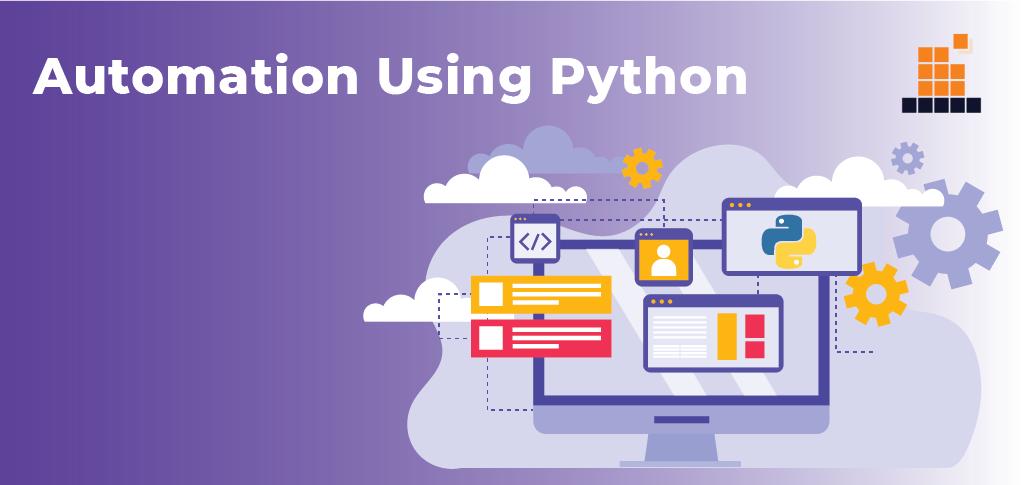In any organization, many tasks would be benefitted from automation but often the processes are excessively niche for the standard software. Python is a programming language that is easy-to-learn allowing the organizations to reap time savings by scripting custom automation. Automation with Python allows people to automate almost anything ranging from filling PDFs, sending emails and voicemails, launching programs to working with calendars, and organizing files and folders. Python is a great common language for beginners who want to get started with programming. It is widely used for automation because of a built-in standard library and several other tools present within the Python ecosystem.
The standard library and tools present in its ecosystem can be useful for everyone besides just a system administrator to automate various parts of their processes to make their work much more efficient. A wide range of tasks such as data wrangling and gathering market research data can be automated by Python. People use this language as a part of marketing, DevOps, Data Science, etc because of the ease of picking up and the ecosystem that it provides.
Why use Python for task automation?
Automation is supposed to remove our work. So, why not use it to ease tasks? But, why use Python and not some other language for this purpose?
It’s because Python provides great readability and approachable syntax. Its code resembles plain English which makes it an excellent choice for the users to start their journey with. When we compare Python with other languages, it stands out as the simplest language of them all. Further, it makes the learning process pleasant and fast. With a bit of time and effort, anyone can gain enough knowledge to write simple scripts on their own. Also, it speeds up the development process even for experienced developers.
Another reason why one should choose Python is that it comes with extraordinary data structure support. They enable users to store and access the data. It also offers different dictionaries, tuples, and sets. They help you to manage the data easily and efficiently and increase software performance when chosen accurately. Moreover, it stores the data securely and in a consistent manner. Even better, this language lets the users create their own data structures which make the language super flexible. Whatever the idea or task is, you can very easily pull it off with the help of Python along with its modules and tools. It is used in many professions and industries like data analysis, networking, science, mathematics, and more.
What can you automate using Python?
Almost everything! Almost any tedious task can be automated with a small amount of work. For that, you need to have Python and relevant libraries on your computer. Let us go through some examples where we use Python for automation.
Reading and writing files
This is a task that you can easily and efficiently automate with the help of Python. To begin, you just need to know the location of the files in the system, their names, and which mode should be used to open them. It is super easy to do with Python. However, the modes of opening files can be mixed and extended. Writing with web scraping or interacting with the APIs can provide a lot of automating possibilities. You should also check a good library csv helping with reading and writing further.
Sending emails
Sending emails is another task that can be automated using Python. This language comes with a great smtplib library. You can use it to send emails via the SMTP or simple mail transfer protocol. Sending emails and replying to them has become easier than ever. It reduces the potential for errors, increases brand awareness for a business, benefits the sales teams, reduces works, saves time, reduces costs, boosts business revenues, and keeps people interested in a brand.
Web scraping
Web scraping is the method of extracting the data from Web pages and saving it on the hard drive. Picture your day at work that involves pulling data from a website that you visit almost every day. Scraping the data would be very helpful once the code is written as it can be run multiple times that makes it useful when you need to handle large amounts of data. Manually extracting the information takes a lot of time and lots of clicking and searching. It is not easy to scrape data with the help of Python. However, for analyzing and extracting data from HTML code, the target page needs to be downloaded first.
Interacting with API
It gives you superpowers when you interact with APIs! For example, there are many APIs available but Open AQ Platform API seems the best option because it doesn’t require any authentication. Interaction with API saves a lot of time, requires less code than usual, and provides faster results. Even when queried, the API gives air quality data for a given location.
Conclusion
Hopefully, after reading this article, you may have realized that there are tons of tasks in your daily life that can be automated even without much programming knowledge. However, you can always dig deeper into multiple sources on the web if you feel like creating some more automation using Python. It will not only give you a wider view of Python’s capabilities but it will also improve your knowledge of the language.
At last, always remember; never spend your precious time doing repetitive and tedious tasks that can be easily automated.
